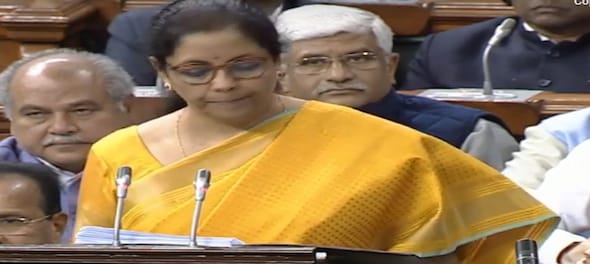
The longest-ever Budget speech made by the finance minister last Saturday has inspired many jokes and memes. The images of her colleagues struggling to stay awake and concentrate have been widely circulated on social media.
Since the budget presentation sets the pace for the economic activities that would be undertaken in the relevant fiscal year, it is critical that this communication is made impactful. The budget speech must inspire confidence in the policy direction and relevance and fiscal robustness. The speech made by the finance minister instead has created doubts about the policy direction and relevance. It has also exposed multiple fiscal crevices in the fiscal conditions. The mismatch between the commitment and resource allocation makes the budget speech misleading to a large extent.
The speech violated the three primary principles of communication - brevity, precision, and relevance.
Even after making a marathon presentation the entire battery of finance ministry officials and the finance minister herself have been busy explaining and clarifying the provisions of the budget. On some important issues, like omission of dividend distribution tax, taxability of NRIs, detailed clarifications were required to be issued.
No one is discussing, debating or even bothering about the key policy points emphasised through the budget speech. Most of the discussions are around 3-4 tax related matters that constituted less than 10 percent of the budget presentation made by the finance minister. It is therefore absolutely clear that the Budget speech mostly ignored the basic principles of communication and was not impactful at all.
The objective of budget presentation
The Union Budget in India usually has five objectives:
(i) Presenting the annual accounts of the Union Government for consideration and approval of the Parliament.
(ii) Presenting the budget of the Union government for the following year. This includes the budget for various revenue and capital expenditure of the union government, allocation of resources to states and union territories, and sources of revenue to meet the budgeted expenditure and allocations.
The key monitorable in this exercise usually is the difference between revenue and expenditure. The excess of budgeted expenditure over budgeted revenue is termed as fiscal deficit.
This deficit is met by the Union government through borrowings from various sources. Changes in provisions of various tax laws are also monitored closely as it impacts the tax liability and compliance requirement for the taxpayers.
(iii) Presenting the policy roadmap for the future. This usually is a political statement.
(iv) Presenting an action taken report for the previous budget proposals.
(v) Presenting a medium-term fiscal road map in terms of the Fiscal Responsibility and Budget Management Act 2003 (FRBM Act).
The audience
Various stakeholders in the economy look forward to the budget with a great sense of anticipation. However, their interest is usually limited to the second objective listed above. In that sense, the scope and relevance of the Budget presentation have diminished materially over the past two decades, primarily because:
This year particularly, the importance of budget was even lesser, because:
Since the indirect tax component, which used to come into effect immediately post budget presentation, is insignificant in the budget, there is no need to maintain secrecy. It would, in fact, be better to make it a practice to present the budget on first Saturday of February and keep the market closed on that day. This will allow full two days to the market participants to digest the provisions of the finance bill and other policy statements and make informed decisions rather than making knee-jerk reaction alongside the budget presentation.
The Finance Bill in 10-15 bullets points
The best course for the finance minister would be to present the focus theme and important provisions of the Finance Bill in 10-15 bullets points and emphasise briefly but forcefully on the commitment of the government towards economic growth that is sustainable and inclusive. A detailed presentation could be provided to the media and through websites to all the stakeholders for further discussion and elaboration. These presentations could also be digitally mailed to all the taxpayers and other people who register with the ministry for receiving it directly.
To give context to these suggestions, I may highlight that the introduction of many important legislations of wider national importance like J&K Reorganisation Bill, Constitutional Amendment Bill to abrogate Article 370, and Citizenship Amendment Act, etc. did not take more than 10 minutes.
Vijay Kumar Gaba explores the treasure you know as India, and shares his experiences and observations about social, economic and cultural events and conditions. He contributes his pennies to the society as Director, Equal India Foundation. The views are personal.
Read his columns here.
Check out our in-depth Market Coverage, Business News & get real-time Stock Market Updates on CNBC-TV18. Also, Watch our channels CNBC-TV18, CNBC Awaaz and CNBC Bajar Live on-the-go!


PM Modi visits Ram Mandir for first time since 'Pran Pratishtha', offers prayers before roadshow
May 5, 2024 8:59 PM
Visiting temples, obliging selfie requests, jabbing rivals – Kangana Ranaut is wooing voters on campaign trail
May 5, 2024 8:23 PM

